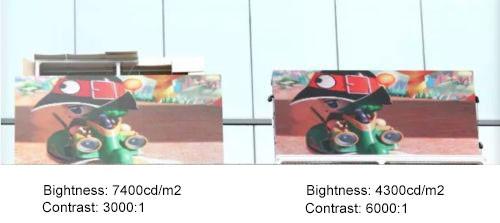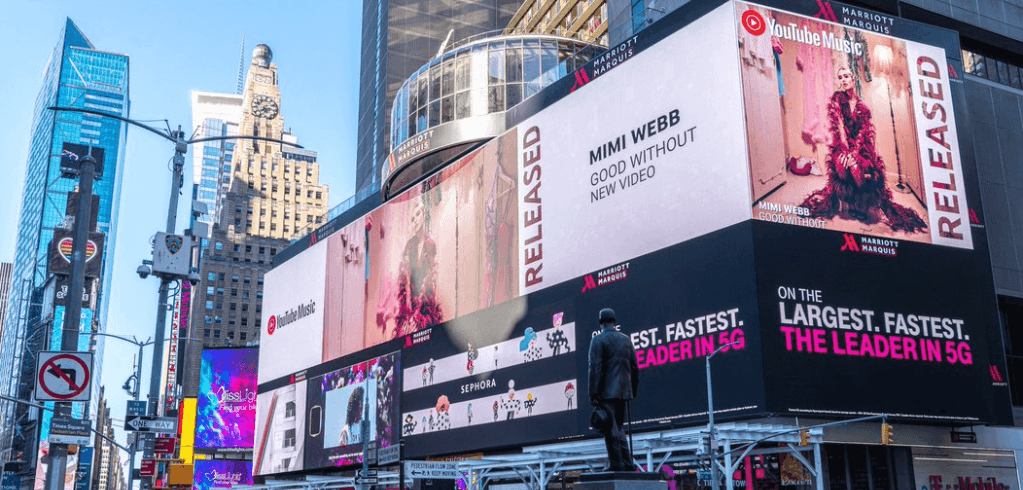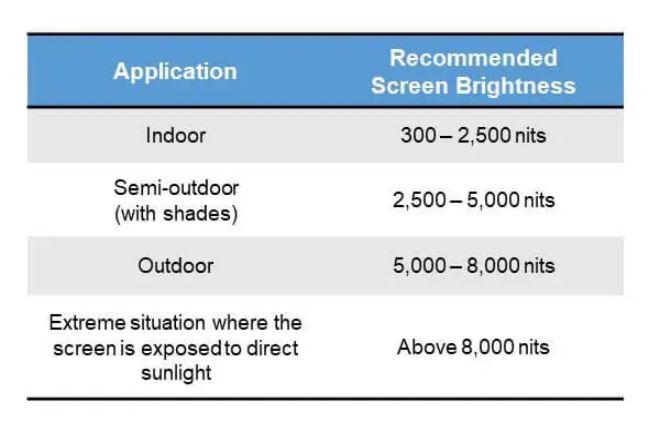What is LED Screen Brightness?
The brightness of an LED display screen refers to the intensity of light emitted by its internal LEDs (Light Emitting Diodes). Typically, we use cd/m² (candela per square meter) or nits as units to measure the brightness of an LED screen. An increase in brightness value indicates that the LED display emits stronger light. For example, an outdoor LED screen with 10,000 nits of brightness is significantly brighter than an indoor LED screen with only 800 nits.

The Importance of LED Screen Brightness
Adaptation to Different Environments
The brightness of an LED screen is crucial for adapting to different environments. Choosing the right brightness level not only ensures harmony with the environment but also enhances the economic efficiency of the LED screen.
Impact on Overall Performance
Brightness significantly affects other performance indicators of the LED screen, such as contrast, grayscale, and color vibrancy. Insufficient brightness directly impacts the screen's performance in these areas, which largely determines the overall quality of the LED display.
Consistent Viewing Angle
Higher brightness allows for consistent image clarity across a wide viewing angle. This means that even when viewed from non-central angles, a high-brightness LED screen can ensure clear content display, whereas a low-brightness screen may struggle to maintain clarity from the edges.
Wide Range of Applications
High-brightness LED screens have a wide range of applications, suitable for locations like retail stores, airports, sports venues, and transportation hubs that require high visibility and image quality. In contrast, low-brightness LED screens are typically limited to indoor or dimly lit environments.

How to Determine the Appropriate LED Screen Brightness
While high brightness is a significant advantage of LED screens, it also comes with higher costs. Therefore, when purchasing an LED screen, it’s important to consider factors such as the installation location and the type of content to be displayed to maximize cost-effectiveness. At the same time, avoid choosing excessively high brightness unless necessary to prevent unnecessary expenses.
Consider the Installation Environment When Selecting LED Screen Brightness
Typically, the brightness of indoor LED screens should range between 800 and 2500 nits, depending on the ambient light levels of the indoor environment. Some indoor areas may be dimly lit, while others may appear brighter due to sunlight filtering through glass walls, windows, or other structures.
For outdoor LED screens, brightness needs vary greatly depending on the location and time:
- In shaded outdoor areas, LED screen brightness should be set between 2500 and 4000 nits;
- In outdoor environments without direct sunlight, the ideal LED screen brightness is between 3500 and 5500 nits;
- In direct sunlight, LED screen brightness needs to exceed 5500 nits to ensure the information is clearly visible.

It is important to note that these brightness values are only guidelines. In practice, the ambient light at different locations can vary greatly. Therefore, it’s advisable to determine the most suitable LED screen brightness through on-site inspections or testing within these suggested ranges. Additionally, seeking professional advice from experienced LED screen operators or suppliers can be beneficial.
The Impact Of Content Style On LED Screen Brightness
The required brightness level of an LED screen may vary depending on the type of content being displayed, particularly in indoor applications:
- For LED screens displaying simple text information, a brightness level of 200 to 300 nits is sufficient;
- For general video content, the LED screen brightness should be between 400 and 600 nits;
- For advertising, especially content requiring strong visual appeal, LED screen brightness should be increased to 600 to 1000 nits.
Conclusion
Overall, brightness is a key factor in ensuring the clarity of LED screen content, enhancing image quality, and creating visual impact. LED screens have a significant advantage in brightness over other display technologies, making them suitable for a wide range of applications. However, when selecting an LED screen, it is crucial to consider various factors to ensure that the chosen brightness meets practical application needs while optimizing the performance-to-cost ratio of the LED screen.
Post time: Oct-12-2024







